The path leading up to the October 4, 2022 release of Overwatch 2 was tough to navigate, like a half-cleared trail in a dense wood. The messaging around the game was winding and discombobulating (it wasn’t clear if it was a standalone sequel, if the original Overwatch would shut down, if/when the promised PvE mode would launch), and the random branching paths that veered off the central one were abrupt and contradictory (a free-to-play business model with microtransactions, the removal of the second tank role, a staggered launch split between PvP and PvE).
Though this path was frustrating, it wound through a period of stagnancy in Overwatch 1 that was even more exasperating, one that was the direct result of Blizzard’s work on the sequel. So players, desperate for something—anything—new, were just happy they were getting more Overwatch content, and hopeful that it would inject new life into the franchise.
A year later, the path ahead is somewhat more clear, though still often frustrating. We’ve gotten used to the 5v5 format. The PvE mode finally launched. New heroes are in the pipeline, new maps, too. But the monetization model still feels predatory, and the rejigged PvE costs money to enjoy. Plus, the Overwatch League as we know it is dead, and the competitive mode feels like even more of a grind than the very grindy battle pass. Surrounding all of that is Blizzard’s inconsistent and occasionally unclear messaging, which only makes matters more frustrating for regular players like myself.
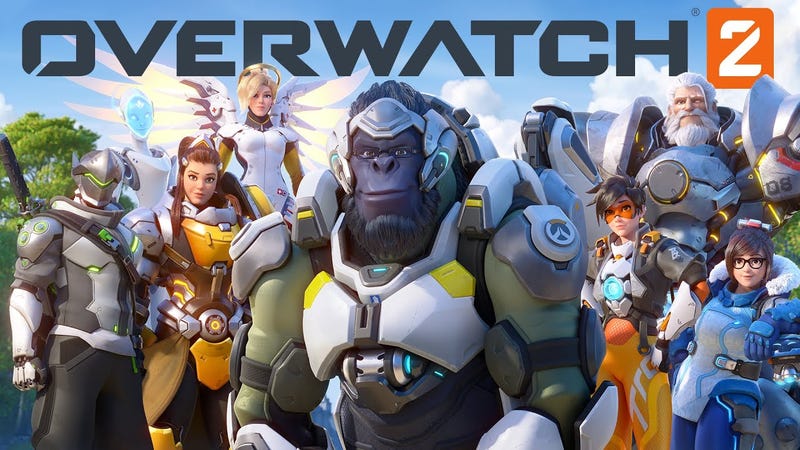
Overwatch 2’s lead-up and launch
Overwatch 2 was announced way back in 2019, but it wasn’t until just a few months before its 2022 launch that we started getting tangible details about the sequel. And those details were rather jarring: In March of 2022, we learned that PvE and PvP would ship separately; in June Blizzard announced Overwatch 2 would replace the original game entirely, despite former game director Jeff Kaplan promising they’d be part of a “shared multiplayer environment”; and in September we got more details about how the free-to-play model would work, and the subsequent grind its battle pass would require. But players were still confused about how the transition between the two games would work, so countless social media posts and articles were dedicated to answering those frequently asked questions. Still, misinformation thrived, and people grew frustrated.
Then, on October 4, 2022, after more than a day’s worth of downtime (Overwatch 1 shut down for me at 12:01 pm EST on October 3), Overwatch 2 kicked off—kind of. Due to massive server issues resulting from DDoS attacks, most people couldn’t get past the sequel’s home screen for the first several days post-launch. When people were finally able to start playing, they were quick to point out how astronomically expensive legendary skins were, how unsatisfying battle pass progression was, and how buggy their matches felt.
In the early days and months of Overwatch 2, Blizzard worked to right the ship, disabling some characters to help solve the bugs they were causing, and giving away a Bastion skin that only cost one Overwatch coin (an average skin runs you 1500 coins, or $US15), which then ruined everyone’s coin balance. Changes were made to fix server stability and help the battle pass progression feel a bit more satisfying. Developer blogs were updated, game director Aaron Keller trotted out to respond to the more serious ire, and an overall air of “we’re listening” was pumped out of Blizzard HQ like Disney pumping peppermint essential oil onto its Main Street.
But problems persisted in the face of steady updates, problems that are still there today: matchmaking still feels messy, some heroes still feel broken, events feel half-baked, PvE feels to costly (each new story mission will cost you $US15), Despite this, people like me (longtime Overwatch 1 players) still regularly boot up the sequel and dive in. Is it an enjoyable experience? Sometimes, sure, with shining moments like the addition of fun new heroes that add more depth to the game and a new mode that helps shake up matches. But it’s a far cry from what we hoped for in a sequel, and with the deletion of the original Overwatch, it’s now our only option to enjoy the franchise.

The endless Overwatch 2 competitive grind
It wasn’t until Starfield released, and the calmly satisfying loop of a Bethesda game pulled me away from Overwatch for the first time in nearly a year, that I realized I was in an untenable and somewhat unhealthy relationship with Blizzard’s hero shooter. Despite my problems and protests, Overwatch 2 has been my main game since launch, and I’ve spent an embarrassing 555 hours (that’s 23 days, guys) embedded in one particular mode: competitive.
I’m a relentless comp player, seeking salvation in an ever-elusive higher rank, playing frustrating matches for hours upon end with a few of my close friends, losing seven and winning five just to get unceremoniously dumped down a level. And I’ve kept playing my thankless support role even in the face of the controversial 5v5 swap (which makes supporting even harder without the protection of an extra tank), character tweaks that continue to raise the skill ceiling and increase Overwatch’s overall match speed, and a confusing new ranking system that still bewilders.
In the original Overwatch, competitive players were assigned a tier (Bronze, Silver, Gold, Platinum, Diamond, Master, or Grandmaster) and a skill rating, or SR, that was a number anywhere from 1 to 5,000. Every game you played would make that number go up or down, with each tier covering a certain range of numbers (for example, Gold tier players had SRs that were anywhere between 2,000 and 2,499). Overwatch 2 removed SR entirely, only adjusting your rank after every five wins or fifteen losses (though those numbers were different at launch).
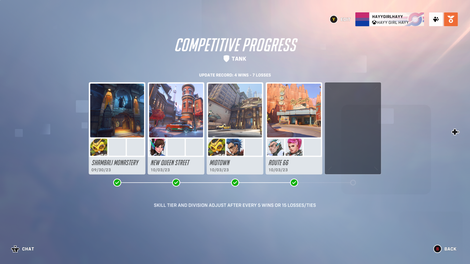
Because of this lack of clarity, there have been dozens of times throughout this past year where I’ve wondered, “Why the fuck am I still doing this?” Overwatch 2’s competitive mode is a Sisyphean chore, a ceaseless grind that offers little to no understanding of how each game affects your bottom line. Overwatch streamer Eskay put the specific, shitty feeling that comp elicits so well in a YouTube video that Aaron Keller even referenced it in a September 8 blog post about the future of the mode.
As Eskay points out, Overwatch 2’s current system obfuscates so much of the math that contributes to your rank that it feels like it’s inherently broken, and there’s no point in “trying to climb a broken system.” She sets up a scenario: you go four and zero, and are one win away from a rank adjustment that will presumably increase. But if you lose five in a row and derank, you’re never rewarded for those first four wins, you never get a sweet little serotonin boost that would come with a rank up. In a different ranking scheme, even if you lost five in a row after a recent rank up and immediately went back down a level, you at least got the satisfaction of a new peak, a new high. That doesn’t happen right now in Overwatch. Instead, it feels like a grind with no clear end goal.
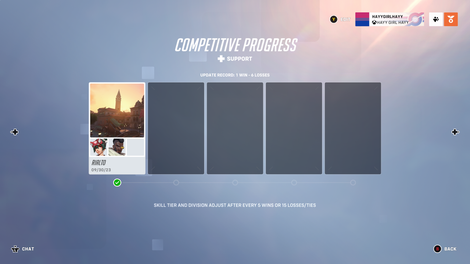
Keller’s blog agrees with Eskay’s complaints, but offers little more than vague promises that changes are coming down the pike. “Going forward, we’re shifting our values to provide more transparency to the mode,” the blog reads. “This doesn’t necessarily mean that the older skill rating measurement is or isn’t coming back. As we continue to iterate on the possibilities, we very much appreciate your continued feedback. We want you to have a better understanding of what your true rank is and why wins and losses cause it to move up or down based on the general skill level of all players in a match.” But when will we get that understanding, and how? Will I have to play 500 more hours of Overwatch 2 comp before satisfying changes are made? I don’t think I can bear it. All of this comes after months of complaints about comp, and a January overhaul of matchmaking and ranking that clearly didn’t fix all the pain points.
While this may seem like a pretty niche, in-the-weeds problem that only competitive players face, it mirrors much larger problems facing Overwatch 2 and its community: Blizzard’s inconsistent messaging.
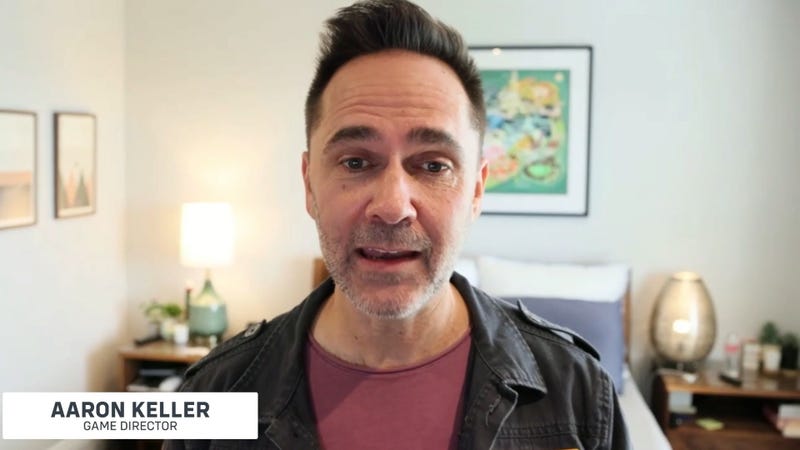
Blizzard’s communication issues
The PvE debacle is the most obvious example of Blizzard’s messaging and delivery problem, which makes it hard to believe that these competitive issues will be addressed in meaningful ways. The new PvE mode was first announced in 2019, back when Jeff Kaplan was still game director, and it promised a massive story mode that would include skill trees for each character, allowing players to tailor beloved heroes’ kits to their unique playstyles. When it was announced that the PvE and PvP modes would be decoupled in order to ensure Overwatch 2 launched in a timely manner, players thought they’d still eventually get this impressive new mode, that the wait was necessary in order to facilitate something so novel.
It wasn’t until May of this year, seven months after Overwatch 2 launched, that Blizzard revealed we weren’t getting that PvE mode at all, but something entirely different and much more like older Overwatch 1 missions. Sure, they would finally bring new storylines to the universe after several years of silence, and sure, they would be much more grand in scope than what the original game offered, but they were a far cry from what was promised. And, they were going to cost money. Every single time a new story mission comes out, you’ll have to fork over $US15 to play it. Naturally, players were angry, as the PvE situation added yet another problem to what felt like a growing pile.
With Overwatch 2 swapping to a F2P model, there was already a loss of good faith from a player perspective, and that faith dwindled even further when it became clear that the battle pass would cost you $US10, some of the best skins were locked behind the store for $US20 and not even available in the battle pass you just paid for, unlocking new heroes required you to progress far along a free version of the battle pass if you didn’t want to pay for the premium one, and PvE missions would cost $US15 for the foreseeable future. The communication issues that persist threaten to grind the last vestiges of that faith into dust.
It took months post-launch for Blizzard to acknowledge that its communication regarding Overwatch 2’s issues was subpar, and while there are certainly more comms more often from the studio, we aren’t ever really getting a complete picture. Keller’s comp mode blog is indicative of that: He expounds on the benefits of open dialogue in one breath, and in the other undercuts that open dialogue with vague platitudes. He writes that “the team has been working on changes to our competitive mode for some time,” but doesn’t offer up a single example of one. And those changes are coming, but “sometime down the road” with “more details on specifics as we get closer to releasing the changes,” some of which will come “in the short term” and others “early next year.” What does any of that mean? (Kotaku reached out to Blizzard for comment and were pointed in the direction of Keller’s blog.)
It has been a year of this: valid complaints met with assurances that they aren’t falling on deaf ears, followed by a long, drawn-out process that feels like the team is scrambling behind the scenes to come up with a palatable response that doesn’t further rile up the core group of players. These communication issues aren’t unique to Blizzard, as game development still so often operates behind closed doors and drawn curtains, but they make it so very hard to stick with Overwatch 2 in the absence of both Overwatch 1 and much of what made that original game so special.
Maybe, now that Blizzard has officially said that Overwatch 2 is out of its bizarre “Early Access” period, it will start to feel like problems are being addressed in a timely manner. Maybe year two of Overwatch 2 will be more responsive, more reactive, more fun. A girl with 555 hours in comp can dream.
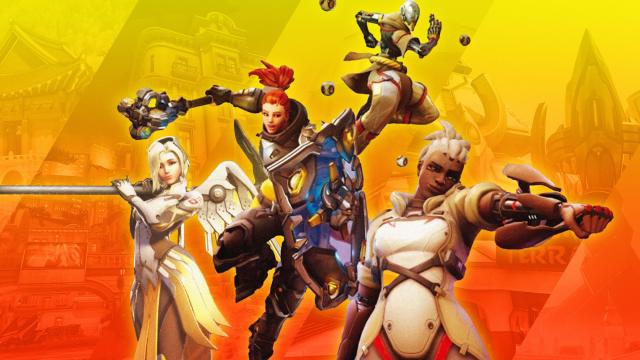
Leave a Reply